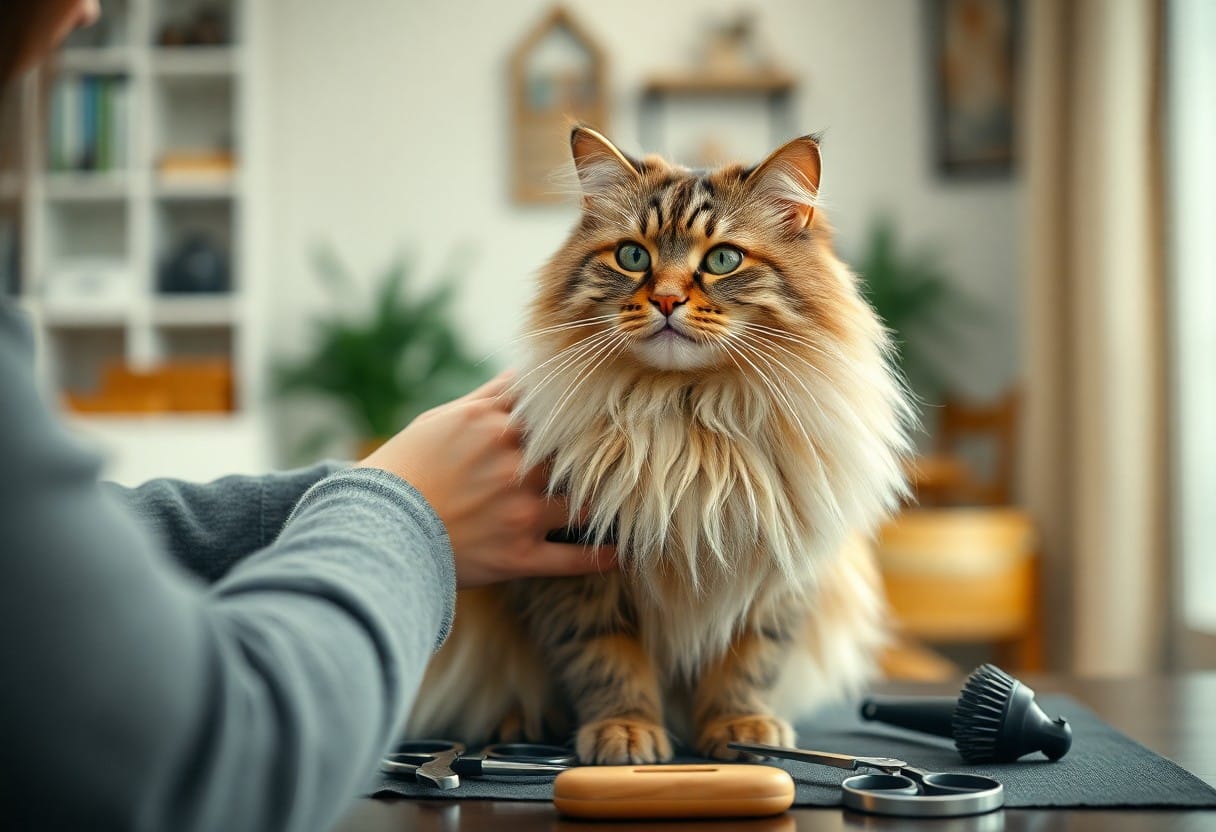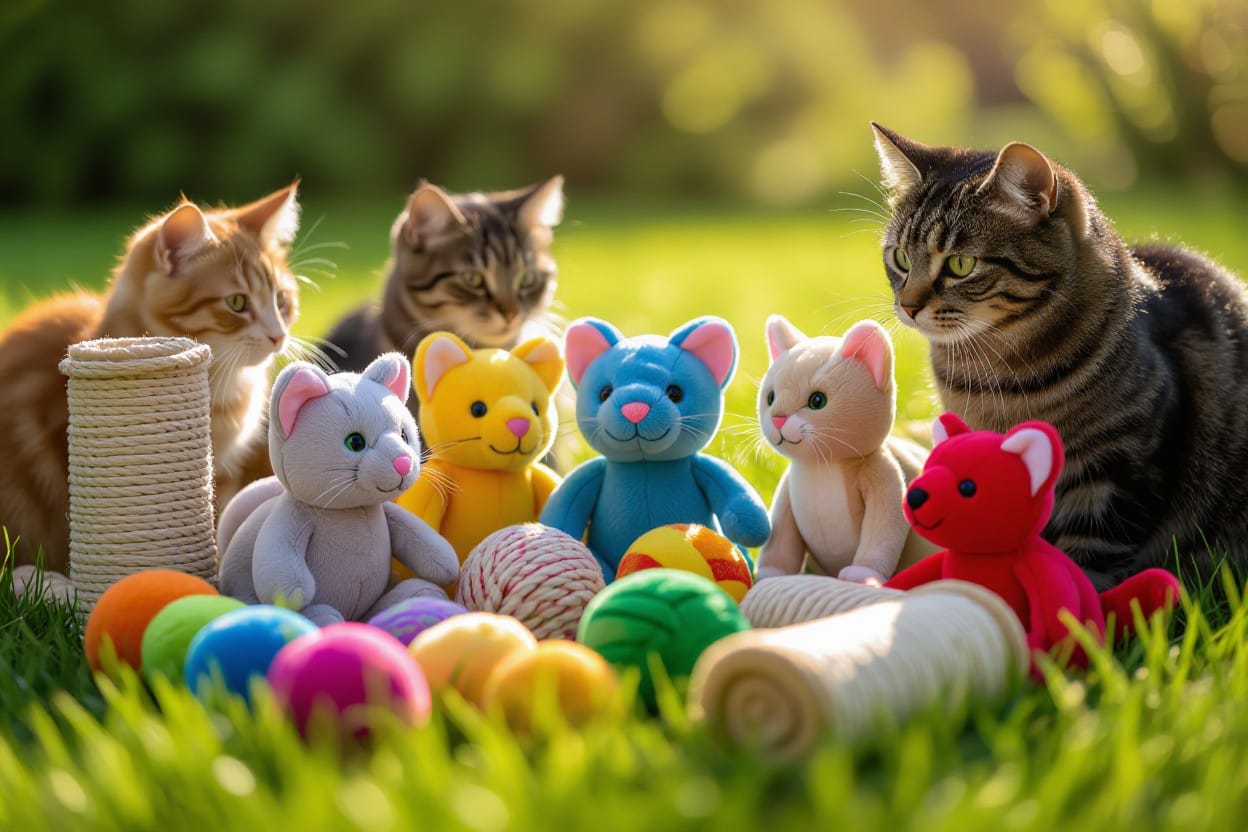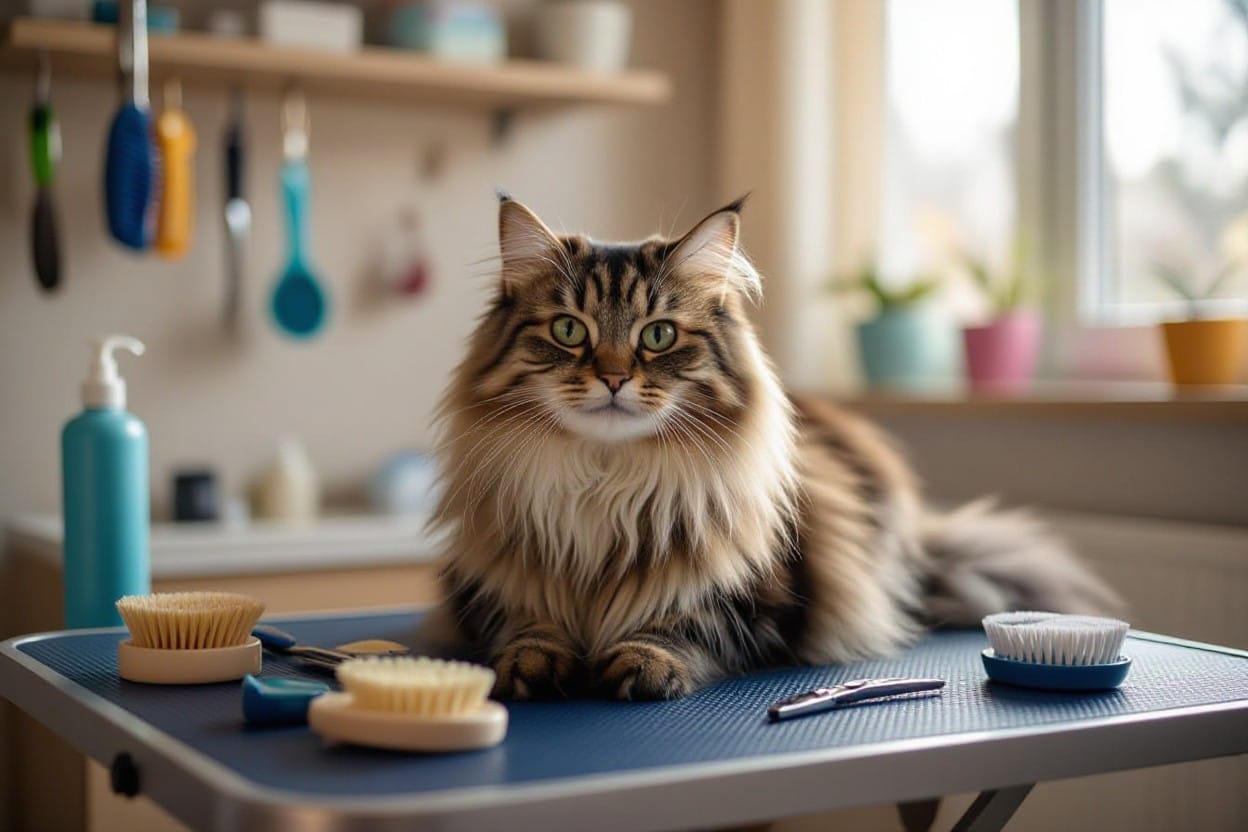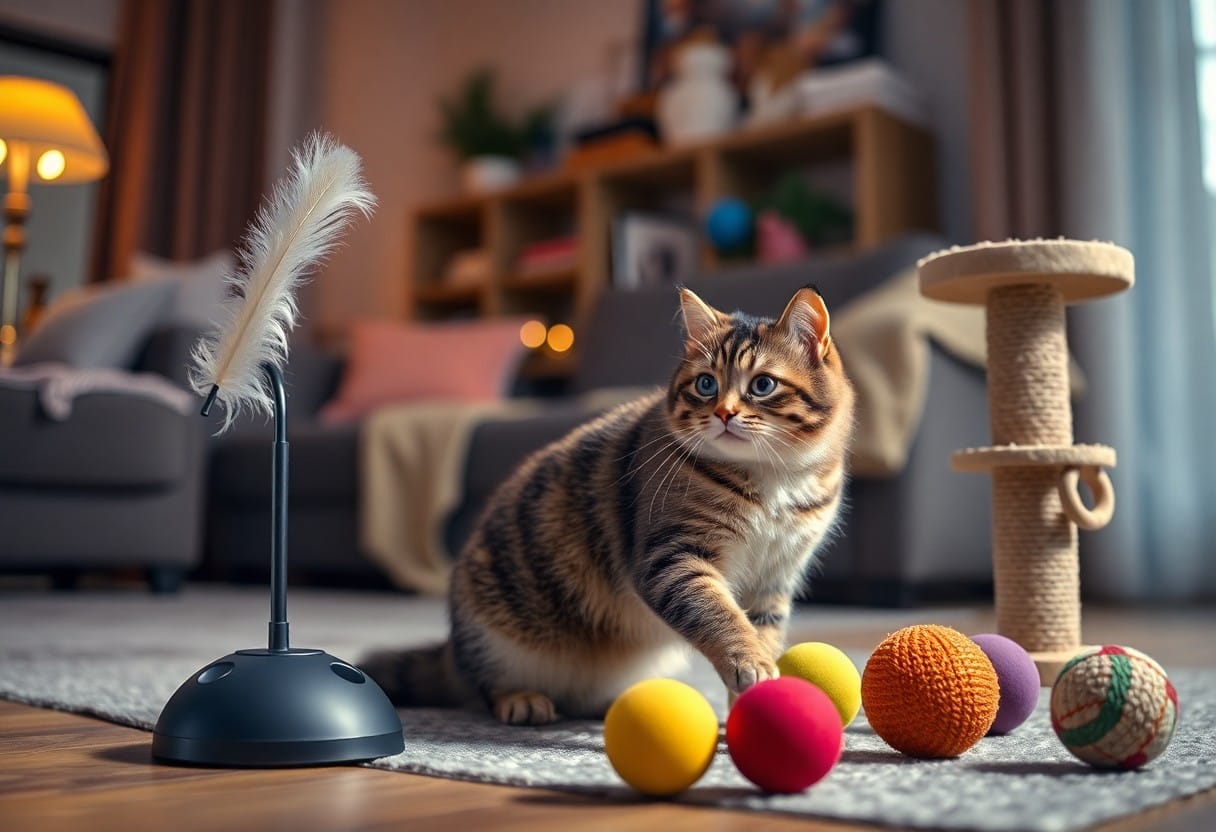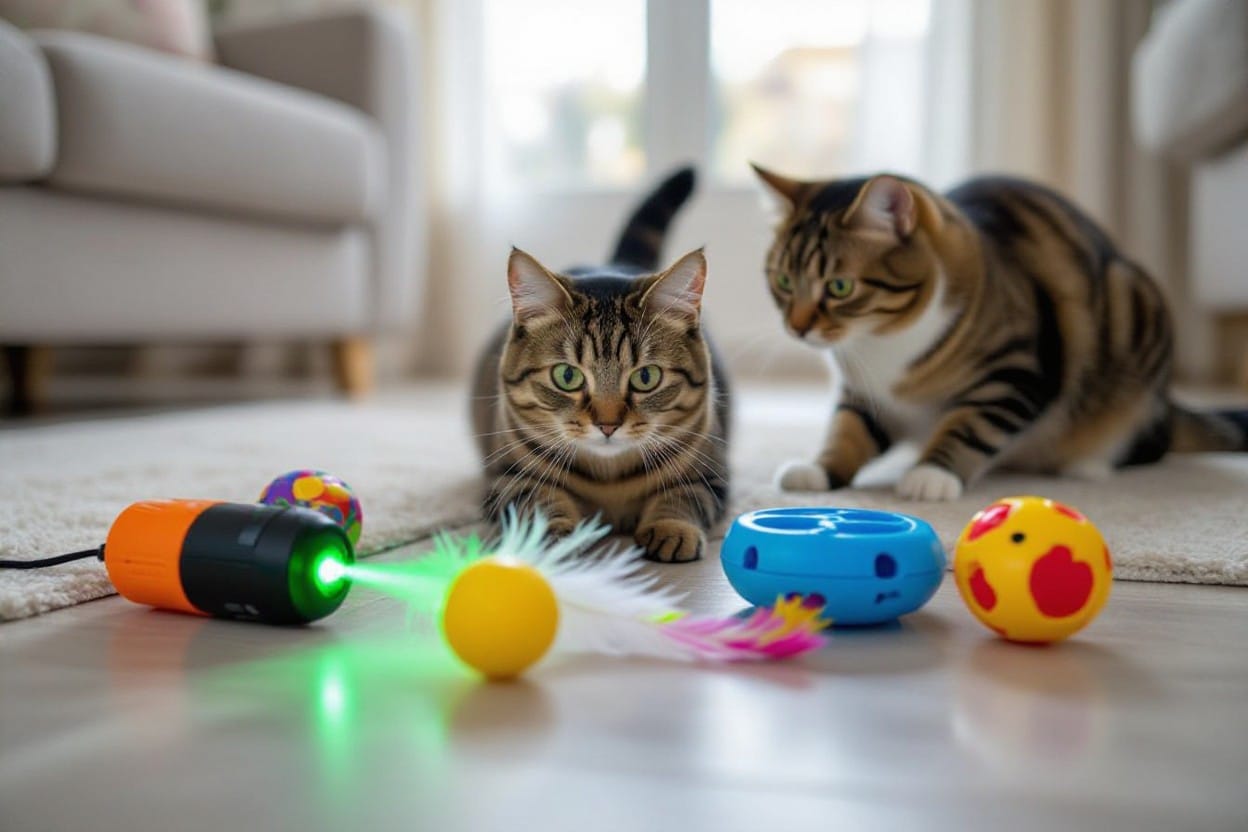Just because your cat has a luscious, flowing coat doesn’t mean you can’t keep it looking its best right at home! Grooming your long-haired cat not only helps control excess shedding and hairball formation but also ensures a healthy skin and coat. In this guide, you will discover effective techniques for detangling those pesky knots, tips for minimizing shedding, and ways to promote a peaceful grooming experience for both you and your feline friend. With some patience and the right tools, grooming can become a nurturing bonding activity for you and your beloved companion.
Key Takeaways:
- Regular grooming is vital for long-haired cats to prevent mats and tangles. Use a wide-toothed comb or a detangling brush twice a week to keep their coat smooth and manageable.
- Shedding can be reduced through consistent brushing and a healthy diet rich in Omega fatty acids, which also support skin health. Consider using a deshedding tool during peak shedding seasons.
- To minimize hairballs, ensure your cat has plenty of fresh water and engage them in regular play to encourage their grooming habits. Specialized hairball prevention treats can also offer extra assistance.
Types of Long-Haired Cats
The world of long-haired cats is diverse, with several breeds showcasing their luxurious coats. Each breed has unique characteristics and grooming needs. Here are some popular long-haired cat breeds:
| Bengal | Known for their spotted coats and playful nature. |
| Maine Coon | One of the largest domesticated breeds, friendly and affectionate. |
| Persian | Renowned for their flat faces and silky fur. |
| Ragdoll | Sweet-tempered and often goes limp when you hold them. |
| Siberian | Adaptable, with a thick coat suited for cold climates. |
The information about these breeds will help you understand the grooming needs of your own long-haired cat.
Popular Breeds
While there are several long-haired cat breeds, some stand out due to their unique features and personalities. For example, the Maine Coon is known for its large size and sociable demeanor, while the Persian cat is loved for its luxurious coat and gentle temperament. By recognizing these popular breeds, you can better prepare for their grooming requirements tailored to their individual characteristics.
Grooming Needs by Breed
Now that you’re familiar with some popular long-haired breeds, it’s crucial to focus on their individual grooming needs. Each breed has varying specifications in terms of coat maintenance, shedding, and potential matting. Understanding these differences plays a key role in providing the best care for your feline friend.
The grooming requirements can vary widely among long-haired cat breeds. For instance, breed such as the Persian tends to have a dense fur coat, making it especially prone to matting and hairballs, necessitating daily grooming sessions to keep their coat healthy. In contrast, the Maine Coon has a less dense coat that may require grooming several times a week but is generally more resistant to mats. Paying attention to your cat’s breed-specific grooming needs ensures you address their unique challenges while promoting their overall health and comfort.
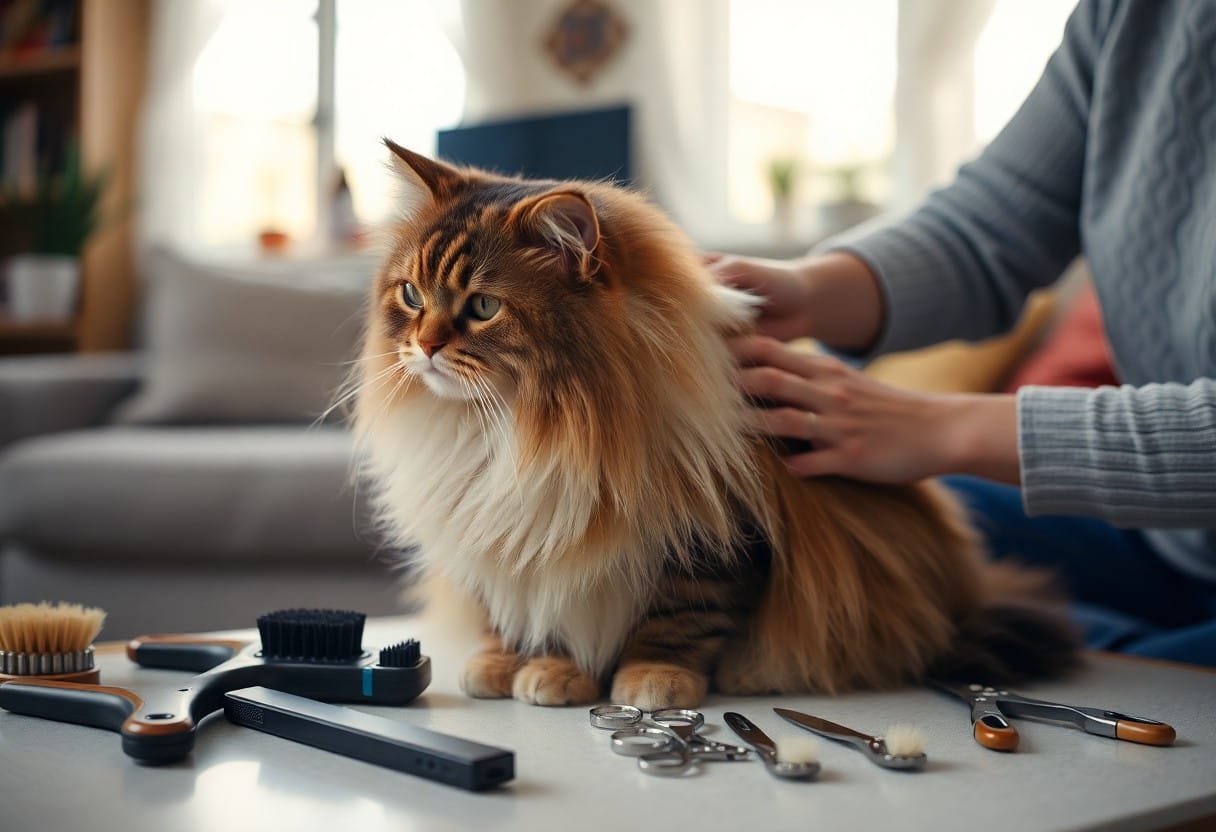
Essential Grooming Tools
You’ll need a few crucial tools to keep your long-haired cat looking their best. Investing in the right grooming equipment not only makes the task easier but also ensures your cat remains comfortable during the process. Your crucial toolkit should include brushes, combs, and grooming accessories that tackle detangling, shedding, and hairball prevention effectively.
Brushes
Brushes are fundamental for maintaining your long-haired cat’s coat, as they help to remove loose hairs and prevent mats. Opt for a slicker brush or a pin brush that penetrates the dense fur while being gentle on the skin. Regular brushing keeps the coat untangled and reduces shedding, making it a vital part of your grooming routine.
Combs
You should also have a quality comb on hand to help with finer grooming details. Combs are excellent for detangling small knots and mats that brushes may miss, especially around sensitive areas like the face and ears. Using a comb can also help distribute natural oils throughout your cat’s fur, enhancing shine and overall coat health.
Tools like wide-toothed combs are particularly effective in gently detangling without pulling on your cat’s fur. When you comb, work slowly through your cat’s coat, starting at the ends and gradually moving towards the roots. Regular combing not only prevents mats but also minimizes hairballs, providing a smoother grooming experience overall.
Grooming Accessories
With the right grooming accessories, you can enhance your home grooming sessions. Consider using grooming gloves, which can catch loose hair while allowing you to bond with your pet during your grooming routine. These gloves are particularly beneficial for cats that are nervous about grooming.
Plus, incorporating tools like a cat-safe vacuum attachment can help you manage shedding effectively. These accessories are designed to be gentle on your cat’s skin while providing a thorough cleaning. Regular use of grooming accessories keeps shedding under control, ensuring a clean home and a healthier pet.
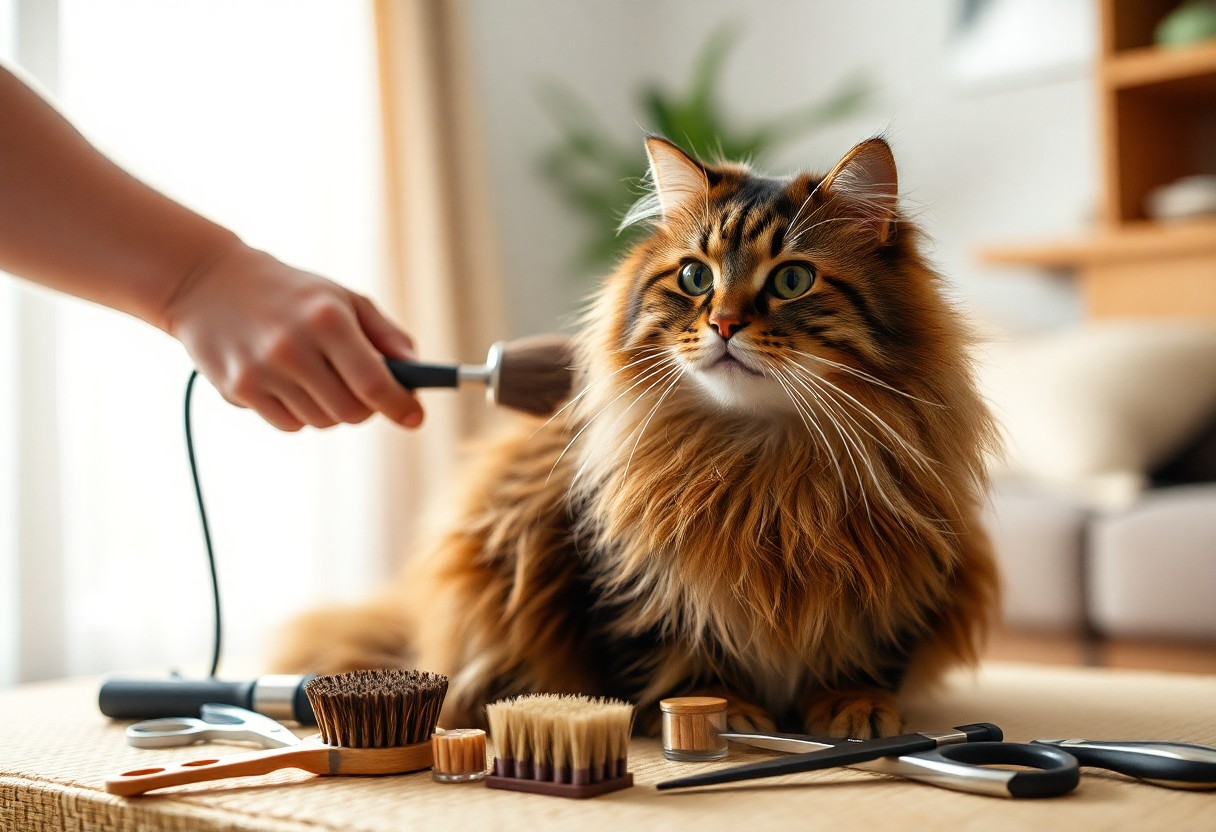
Tips for Effective Grooming
Your grooming routine can be significantly enhanced by following a few simple tips. Start with the right tools, such as a slicker brush and a comb designed for long-haired cats. Establish a regular grooming session time to make it a habit for both you and your cat. Be gentle and patient, allowing your cat to adjust while you work through any tangles. Lastly, always reward your pet with treats or affection after grooming to create positive associations. This will help you keep your cat calm and cooperative during the process.
Frequency of Grooming
The frequency of grooming your long-haired cat depends on their coat’s length and thickness. Aim for at least two to three grooming sessions per week, or even daily if your cat has particularly long or thick fur. Regular grooming helps reduce shedding, minimizes hairballs, and keeps your cat’s coat healthy. By maintaining a consistent grooming schedule, you’ll ensure that any tangles are addressed promptly, contributing to your cat’s overall well-being.
Handling Matted Fur
On rare occasions, your cat may develop matted fur, leading to discomfort and skin issues. It’s imperative to address these mats gently but promptly. If you encounter a mat, avoid pulling or tugging, as this can cause pain and distress for your cat. Instead, use a mat rake to gently break up and remove the mat, starting from the edges towards the center.
With the right approach, handling matted fur doesn’t have to be a daunting task. Start by using a specialized mat rake or a wide-toothed comb to carefully work through the mat. If a mat is too severe, you might need to use scissors with extreme caution; always cut away from the skin to prevent any injury. If you feel uncertain or the mat is too large, consult a professional groomer. Maintaining your cat’s coat is vital for their comfort and overall health, so addressing mats promptly is imperative.
Step-by-Step Grooming Process
Keep your long-haired cat looking their best by following a simple grooming process. Here’s a breakdown of the steps you’ll want to take:
| Step | Description |
|---|---|
| 1. Prepare for Grooming | Gather your important grooming tools and find a calm space. |
| 2. Bathing Techniques | Use cat-friendly shampoo and warm water to cleanse their coat. |
| 3. Drying and Finishing Touches | Properly dry your cat and perform final grooming touches. |
Preparing for Grooming
While preparing for grooming, ensure you have all your tools ready, including a wide-toothed comb, brush, cat shampoo, and towels. Choose a quiet, safe area where your cat feels comfortable, as this will help reduce anxiety. You may even want to employ treats to create a positive association with grooming.
Bathing Techniques
Some effective bathing techniques involve using warm water and a gentle cat shampoo. Always check the water temperature to avoid discomfort for your furry friend. Make sure to wet their fur thoroughly before applying shampoo, and be gentle while massaging it into their coat.
Another key to successful bathing is ensuring you rinse out all the shampoo thoroughly, as any residue can irritate your cat’s skin. Use a cup or a gentle sprayer to help with rinsing. If your cat shows signs of distress, consider shortening bath time or using a damp cloth for spot cleaning instead. Always provide comforting words, so they feel at ease during this process.
Drying and Finishing Touches
Process drying your cat carefully, as excess moisture can lead to skin issues. Use towels to gently absorb the water, and avoid using a hairdryer, which may scare them. If your cat enjoys it, you can use a low-temperature setting to help speed up drying.
The final touches involve giving your cat a good brush post-bath. This helps to remove any dead hair and prevent future tangles, leading to less shedding and fewer hairballs. Pay close attention to their sensitive areas, and use a soft brush to ensure their comfort during the process.
Factors to Consider Before Grooming
Not all grooming sessions are the same! You’ll want to consider several factors to ensure a smooth process for both you and your cat. Think about:
- your cat’s temperament
- their specific health conditions
- the type of tools you’ll need
- when to schedule grooming sessions
After considering these factors, you can prepare adequately for the grooming experience.
Cat’s Temperament
Factors like your cat’s temperament can significantly impact the grooming process. If your cat is anxiety-prone or easily agitated, you may need to take extra precautions to create a stress-free environment. Training your cat to become accustomed to grooming from a young age can greatly improve their comfort level.
Health Considerations
Clearly, your cat’s health conditions are equally important when planning for grooming. Certain issues like skin irritations, allergies, or joint problems can either complicate or necessitate grooming. Consulting your veterinarian before establishing a grooming routine can help identify specific issues that can affect the grooming process and may require a gentler approach.
Health concerns can also contribute to your cat’s overall well-being during grooming. If your cat suffers from obesity or arthritis, reaching all parts of their coat may be challenging, making regular grooming important to prevent matting and hairball formation. Additionally, conditions like dermatitis or fleas can cause discomfort, influencing how your cat reacts during the grooming session. Monitoring these health aspects can ensure that grooming not only improves their appearance but also enhances their overall health.
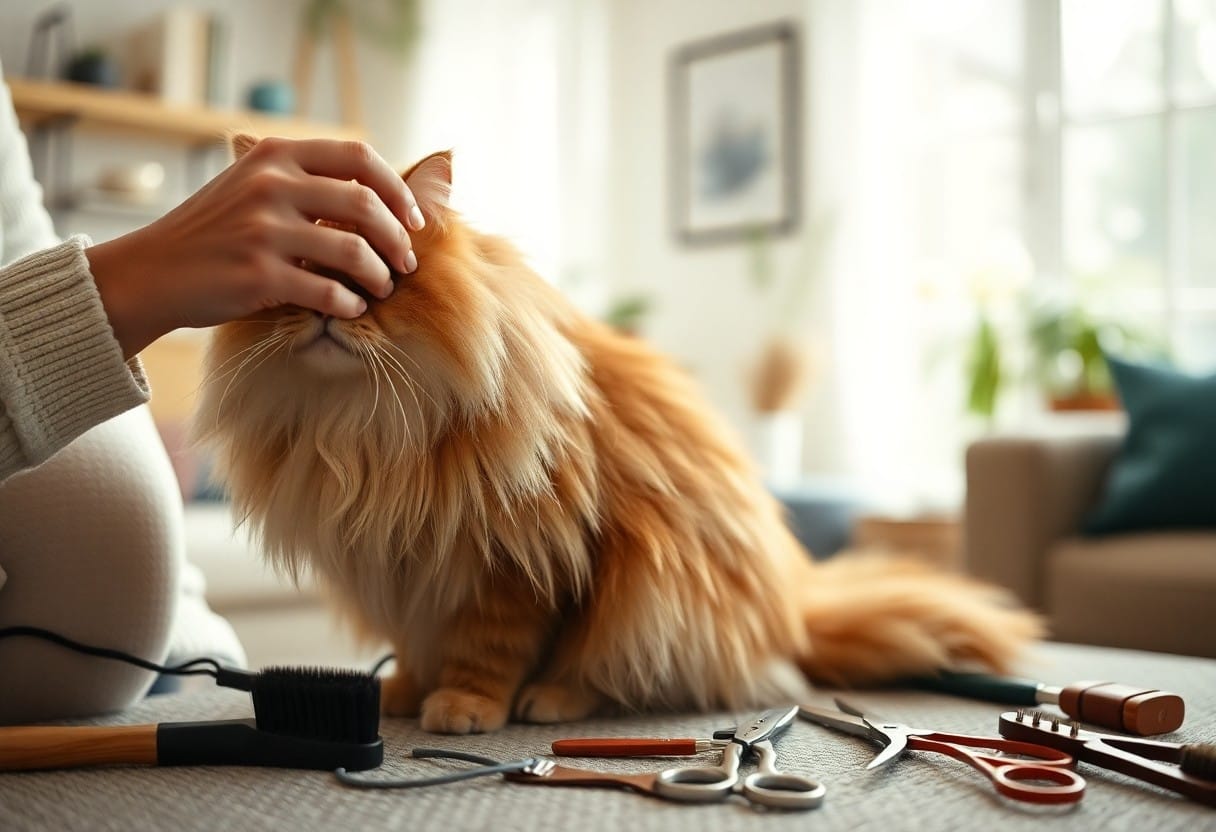
Pros and Cons of Grooming at Home
Many cat owners consider grooming their long-haired cat at home. While it can save money and strengthen your bond with your pet, there are factors to weigh. The benefits and drawbacks are outlined in the table below:
| Pros | Cons |
| Cost-effective | Requires time and effort |
| Bonding opportunity | Some techniques may be tricky |
| Control over grooming tools | Inadequate grooming may lead to mats |
| Immediate feedback on cat’s condition | Potential for stress for the cat |
| Convenience of scheduling | Risk of injury if not careful |
Benefits of DIY Grooming
With DIY grooming, you gain greater control over your long-haired cat’s care routine. You’ll save costs associated with professional groomers and have the freedom to establish a grooming schedule that suits both you and your feline. Most importantly, regular grooming helps prevent painful mats and reduces shedding, making your home more comfortable. You’ll also notice a reduction in hairballs, benefiting your cat’s overall health.
Challenges and Limitations
Now, while the idea of grooming at home is appealing, it does come with its challenges and limitations. You need to invest time and effort in understanding the right tools and techniques to handle your long-haired cat effectively. Additionally, improper grooming can lead to harmful mats and stress for your pet. Learning how to manage your cat’s fear or anxiety during grooming sessions is crucial.
Grooming your long-haired cat can be a rewarding experience, however, you must be aware of the potential risks involved. Improper techniques can lead to severe matted fur, which can cause skin irritations or pain for your cat if not corrected promptly. Furthermore, using the wrong tools can result in injury to both you and your cat. It is important to proceed with caution, as your cat may not always appreciate being groomed, potentially leading to a challenging experience. Maintaining a calm environment and using pet-friendly tools can mitigate these difficulties.
To wrap up
Ultimately, effectively grooming your long-haired cat at home significantly enhances their health and well-being. By regularly detangling their fur, reducing shedding, and preventing hairballs, you create a more comfortable environment for both you and your pet. Use a high-quality comb or brush tailored for long-haired cats, schedule regular grooming sessions, and introduce hairball control solutions if needed. With patience and consistency, you can maintain a beautiful coat that will keep your furry friend happy and healthy.
FAQ
Q: How often should I groom my long-haired cat at home?
A: It is recommended to groom your long-haired cat at least 2-3 times a week to prevent tangles and mats. During shedding seasons, such as spring and fall, daily grooming may be necessary. Regular grooming not only keeps your cat looking good but also reduces the risk of hairballs and keeps their skin healthy.
Q: What tools do I need for grooming my long-haired cat?
A: To groom your long-haired cat effectively, you will need a few vital tools: a wide-toothed comb for detangling, a slicker brush to remove loose fur, scissors for snipping away any stubborn knots, and a deshedding tool to manage seasonal shed. Additionally, having some cat-friendly grooming wipes or a damp cloth can help in cleaning any debris or loose hair from their coat.
Q: How can I prevent my long-haired cat from developing hairballs?
A: To minimize hairballs in your long-haired cat, regular grooming is key, as it helps remove loose hair before it can be ingested. Additionally, providing a balanced diet with added fiber can help facilitate healthy digestion. If your cat is prone to hairballs, consider using specialized cat food formulas or hairball control treats recommended by your veterinarian.
Grooming Your Long-Haired Cat at Home: Tips for Detangling, Shedding, and Hairball Prevention
Grooming your long-haired cat at home can enhance your feline friend’s appearance while promoting their overall health. A well-groomed cat is less likely to experience discomfort from mats, excessive shedding, or hairballs. Here are some actionable tips to tackle these common issues efficiently.
Detangling Your Cat’s Fur
Detangling is an vital part of grooming long-haired cats. Here’s how to do it effectively:
1. Start Slowly: Before entering into grooming, allow your cat to become familiar with the grooming tools. Show them the brush and let them sniff it.
2. Work in Sections: Divide your cat’s coat into manageable sections. Start from the back and move towards the head, ensuring you don’t miss any areas.
3. Use a Wide-Toothed Comb: Begin with a wide-toothed comb to gently detangle any knots. Be patient and avoid pulling at the fur to prevent discomfort.
4. Slicker Brush for Finishing Touches: Once the tangles are smoothed out, use a slicker brush to remove loose fur and give the coat a smooth finish.
5. Snip Only If Necessary: If you come across a particularly stubborn knot, consider using scissors for a safe removal. Be cautious and ensure you only cut fur, avoiding any skin contact.
Managing Shedding and Reducing Loose Fur
Long-haired cats tend to shed more, especially during changes in seasons. Here are ways to manage shedding:
1. Frequent Grooming: Increase your grooming sessions to daily during peak shedding times. This will help collect loose fur and reduce the amount floating around your home.
2. Deshedding Tools: Invest in a quality deshedding tool, which can be particularly effective in reaching the undercoat of long-haired breeds.
3. Regular Vacuuming: Maintain a clean environment by vacuuming your home regularly to manage the hair that sheds off your cat.
4. Brush While They’re Relaxed: Groom your cat when they are relaxed, possibly after a meal or a nap. This will make the grooming process easier for both of you.
Preventing Hairballs
Hairballs are a common issue for long-haired cats, but preventing them can be manageable. Consider these helpful tips:
1. High-Fiber Diet: Consult with your veterinarian about high-fiber food options that can aid in digestion and help manage hair accumulation in the stomach.
2. Groom Regularly: Stick to a grooming routine as shedding and fur ingestion contribute significantly to hairballs. The more fur you remove from your cat, the less they will swallow.
3. Encouraging Hydration: Ensure your cat has access to fresh, clean water at all times. Proper hydration can improve digestion and lessen hairball formation.
4. Hairball Control Products: Some products specifically designed for hairball control can aid in preventing these unwanted occurrences. Talk to your vet for possible recommendations.
By integrating these grooming practices into your routine, you can maintain your long-haired cat’s beautiful coat while keeping them healthy and comfortable. Regular grooming not only enhances your cat’s appearance but also strengthens your bond with them, making it an enjoyable activity for both of you.
